- Anthony Locke
- Sound Bytes
- Administrator
- Albums and Singles
It has been more than three years since the release of múm's last album "Summer Make Good", and a lot of water has passed under the bridge. And now, finally, a string of European festival appearances heralds their long-awaited new album, strangely entitled "Go Go Smear The Poison Ivy, Let Your Crooked Hands Be Holy", due out September 25.
A colorful, twitching, playful work of art, full of life-affirming energy, the album will be preceded on August 28th by the single "They Made Frogs Smoke 'Til They Exploded". A chirpy song about animal cruelty, it's backed with The Amateur Show, described by the band as a wonky insect-circus instrumental.
With the departure of Kristín Valtýsdóttir at the beginning of the creative process, the core of múm is again down to the original duo of founding members Gunnar and Örvar, but the band itself is now larger than ever, counting in all seven people. The album was recorded at a variety of locations, including the music school in the small fishing town of Ísafjörur in the west fjords of Iceland, where the band made use of the school's various instruments. The songs on this multifarious album were conceived over a long period in many a different fashion, with one song even dating back to the period of "Yesterday Was Dramatic - Today Is OK".
The strange, almost eerie artwork for "Go Go Smear The Poison Ivy...", and "They Made Frogs Smoke..." is by Ingibjörg Birgisdóttir, who also animated the video for the single.
Confirmed summer festival dates follow, as well as fall appearances in New York and Los Angeles. More tour date announcements are imminent:
02 Jun - ATP stage - Primavera Festival, Barcelona, Spain
09 Jun - Villette Sonique Festival, Paris, France
17 Jul - La Mer De Musicas Festival, Murcia, Spain
24 Jul - Sync Festival, Athens, Greece
28 Jul - Afisha Festival, Moscow, Russia
24 Oct - Los Angeles CA, Orpheum Theatre
9 Nov - New York NY, Wordless Music Series at St. Paul the Apostle
10 Nov - New York NY, Wordless Music Series at Society for Ethical Culture
Read More
- Administrator
- Albums and Singles
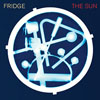 Fridge are one of those bands that defy any categorization. Largely instrumental, they take elements of conventional alternative rock, krautrock, and electronica and work out something that can only be described as Fridge. The Sun is their first new material since 2001's Happiness, a six year break that allowed the trio to integrate new sounds and elements into their already diverse repertoire.
Fridge are one of those bands that defy any categorization. Largely instrumental, they take elements of conventional alternative rock, krautrock, and electronica and work out something that can only be described as Fridge. The Sun is their first new material since 2001's Happiness, a six year break that allowed the trio to integrate new sounds and elements into their already diverse repertoire.
The opening title track sets the mood for the entire album: we're immediately hit with huge, banging, downright funky live drums and chimes mixed in, along with a tiny bit of synths here and there. The percussion gets more krautrock-y on "Clocks," where the irregular click of an analog clock is augmented by shifting drum patterns, and some seriously harsh guitar string abuse. The dissonant opening eventually yields to a much more mellow, conventional middle, mixing conventional art rock guitar with subtle electronic noises.
Not all of the tracks are so focused on the drums, as the 808 pulse of "Comets" takes us back to the 1980s with its synth and piano melodies. "Eyelids," however, is another rocker that with its ramshackle guitar and electronic bleeps calls to mind some of the recent output from The Fall, sans Mark E. Smith's alcohol-induced slurring. Another artist parallel can be felt on "Oram," where after its music box and snare freakout drums, the chaos settles into a distinct jazz influenced groove that feels like a lusher take on some of Squarepusher's work.
Drawing comparisons to other bands is a bit facetious in this case, as Fridge's work stands on its own. While it can be assumed they do reflect some influence from other bands, they are singular in their sound. For all the electronic nuances and technological manipulation, the vibe of a garage band comes through, and the disc just feels like a trio of old schoolmates getting together for fun, and luckily they remembered to turn the DAT on.
samples:
Read More
- Administrator
- Albums and Singles
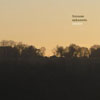 The first full length collaboration between these two internationally known electronic composers lives up to the hype, showing both artists demonstrating their considerable strengths, and the sum is even greater than its parts.
The first full length collaboration between these two internationally known electronic composers lives up to the hype, showing both artists demonstrating their considerable strengths, and the sum is even greater than its parts.
An international collaboration of the most literal sort, Japanese (by way of NYC) composer Ryuichi Sakamoto and Austrian laptop/guitar maestro Christian Fennesz come together here, following their earlier collaborative EP Sala Santa Cecilia, in this case manage to work together while never actually being in the same place at the same time. The tracks were composed between 2004 and 2006, with each artist initiating a piece. This early work was then sent to the other for reworking, and then returned until the track was complete. Sakamoto and Fennesz did meet for live shows, but the recording continued to be separate endeavors. This distinctly modern working style had no adverse effect on the proceedings, as the tracks make for a cohesive, consistent feeling throughout.
For the purposes of Cendre, both artists used laptops as an instrument, while Sakamoto contributed piano, and Fennesz his requisite guitar. For the most part, Sakamoto's piano playing remains a clear and distinct element, sometimes clear and gentle ("Oto," "Haru") other times dissonant and oblique ("Trace," "Abyss"). This is in stark contrast to Fennesz's guitar work, which is often tweaked and processed into something barely recognizable. Exceptions come in the form of "Kokoro," where, though noisy, guitar is distinctly heard along with low bit rate samples and subtle piano, and on "Glow," where clean acoustic guitar playing is heard above the submerged aquatic tones and otherwordly digital effects.
The stringed instruments are not the overwhelming element of any of the tracks, as neither composer's digital contributions should go unspoken. "Mono" features electronics that, percussively, best represent bubbles coming up from a thick, mucky mud, while the title track mixes drone and piano with what sounds like cell phone interference recorded and then manipulated. "Abyss" ends the disc with tons of reverb, calm melodies, and what sounds like wind blowing out of the titular darkness.
While these two artists represent different points on the continuum of electronic music's evolution, their combined effort makes for a intergenerational collaboration that meets its lofty expectations.
samples:
Read More
- Administrator
- Albums and Singles
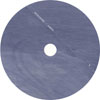 Deupree has been at the forefront of an electronic subgenre of music that revels in its own esotericness, challenging listeners with often unmusical sequences of tones and textures generated by computer programs that are just as difficult and unintuitive. For this release, there is none of that ivory tower sort of composition or oblique Max/MSP patch-generated sounds, but instead a very warm, albeit minimal, set of three tracks that of course feature the digital bleeps and microsounds, but also much more conventional textures which add greatly to the lushness and warmth of the EP.
Deupree has been at the forefront of an electronic subgenre of music that revels in its own esotericness, challenging listeners with often unmusical sequences of tones and textures generated by computer programs that are just as difficult and unintuitive. For this release, there is none of that ivory tower sort of composition or oblique Max/MSP patch-generated sounds, but instead a very warm, albeit minimal, set of three tracks that of course feature the digital bleeps and microsounds, but also much more conventional textures which add greatly to the lushness and warmth of the EP.
For all its austere minimalist packaging, this EP is an extremely warm, organic, and inviting collection of pieces. The gentle tones and music box sounds of the title track make it instantly known that this is not going to be some cold, sterile work that should have never left an art installation. The computer generated tones are there in the background as well, sometimes coming to the forefront as bells, chimes, or even a Mellotron. Most shockingly, sometimes there's even a bit of (gasp) acoustic guitar.
"Seep" is more about the sustained glacier tones: the Powerbook as harmonium which sustains infinitely before a gentle guitar strum comes in and centers everything yet again. The final, short piece, "Field," closes the mini album in the most minimal way: there's no guitars, just gentle digital tones that end way too quickly.
Landing is an all too short 20 minute excursion into warm electronic experimentation that almost everyone can enjoy. As this is apparently a limited edition of 500 created for an Australian tour, copies can't last too long.
samples:
Read More
- Administrator
- Albums and Singles
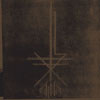 Like its predecessor, 2 is based on elements that Stephen O'Malley (Sunn O)))) and Peter Rehberg (Pita) created as a score to the Kindertotenlieder theater piece by Gisele Vienne and Dennis Cooper, but stands on its own as a coherent work. The disc does not represent a new piece as much as a companion piece to the first, based on the same recording sessions from 2006-2007.
Like its predecessor, 2 is based on elements that Stephen O'Malley (Sunn O)))) and Peter Rehberg (Pita) created as a score to the Kindertotenlieder theater piece by Gisele Vienne and Dennis Cooper, but stands on its own as a coherent work. The disc does not represent a new piece as much as a companion piece to the first, based on the same recording sessions from 2006-2007.
O'Malley and Rehberg have created another installment of genre crossing experimentation that definitely meets the requirement of "dark." The material shows its pedigree well, with neither artist dominating the other sound-wise: O'Malley's slow motion riffing is augmented nicely with Rehberg's laptop electronics. Opener "Game" and ending piece "Snow 2" bookend the work well, the former being a heavy low-end drone that begins near inaudible and builds greatly in volume and dynamics by the end, while the latter sounds like extremely lo-fi guitar parts recorded deep within a dungeon, mingling with the electronics that end up closing the disc with a film score flair. The sprawling middle tracks differ more widely from each other.
"Theme" begins with a slow, simple kick drum pulse, slathered in reverb as synth tones and loops of what sound like harpsichord begin to build in volume until it dominates the mix like a swarm of angry insects that create the most violent organ tones this side of "Sister Ray." It makes for a dark, bleak, evil variant of psychedelia that's not too distant from the acid influenced electronics of C.C.C.C. "Abattoir," on the other hand, is built more like a Sunn O))) track with all sustained monolith riffs, but in this context it sounds like it is being blasted from a loudspeaker in a deep, dark forest.
Stephen O'Malley has been quoted as saying that the KTL project represents a new form of black metal, and it's a pretty accurate depiction. The material does feature that dark, evil atmosphere, but thankfully without the trappings of cookie monster vocals, corpse paint and battle axes. However, it may be closer, both in sonics and spirit, to the mid 1990s ambient offshoot isolationism, helmed by the likes of Lull, Final, and especially the (sub)genre defining Heresy by Lustmord. 2 is not a work with major crossover appeal, but fans of the black metal scene as well as the experimental electronics scene will enjoy this.
samples:
Read More
- Administrator
- Albums and Singles
 Dan Deacon is classically-trained in electro-acoustic composition, but chooses to make clunky, junky electronica using bargain basement gear and canned Casio keyboard beats. He wears goofy oversized sunglasses and performs illuminated by a glowing green Halloween skull. The music is deceptively simple: low-fi, wonky outsider pop that reveals layers of fascinating texture and occasional side-trips into joyful postmodern pastiche.
Dan Deacon is classically-trained in electro-acoustic composition, but chooses to make clunky, junky electronica using bargain basement gear and canned Casio keyboard beats. He wears goofy oversized sunglasses and performs illuminated by a glowing green Halloween skull. The music is deceptively simple: low-fi, wonky outsider pop that reveals layers of fascinating texture and occasional side-trips into joyful postmodern pastiche.
Dan Deacon has toured relentlessly for the past few years, building a strong following by appearing at seemingly every local festival and informal house gig in the Southeastern United States. Those who have picked up his self-released albums have been slightly disappointed to find that the music he performs at his live shows—experimental vocal-based electropop verging on party dance anthems—is not contained on his CD-Rs. His first release for Carpark Records finally offers a selection of the material he has fine-tuned live over the past several years. The album is called Spiderman of the Rings, positioning itself as the mega-Frankenstein-blockbuster hit of the summer, with a nod to the geekdom that clearly exerts an influence on Deacon's music and aesthetics.
"Woody Woodpecker" opens with a loop of the titular cartoon character over a swell of organs and a synthesized rhythm track that becomes increasingly manic. The track has a sort of idiotic grandeur, with a self-important sequencer melody that reaches an absurd crescendo before collapsing in on itself in a mad blur of analogue bleeps and boops. "The Crystal Cat" introduces an infectious vocal refrain against an overamped, distorted squall of a rhythm track.
"Wham City" is a longform tribute to the Baltimore art collective to which Deacon belongs, a hyperactive xylophone sequence that explodes into a loopy group sing-along with incredibly vibrant video-game breaks that rival the best of the classic SID64 and Nintendo compositions. A crazy solo by some kind of oscillator or synth dominates the middle portion of the track before the chorus comes back with a bizarre dayglo mantra: "We have a castle enclosed, there is a fountain/Out of the fountain flows gold into a huge hand/That hand is a held by a bear who had a sick band/Of ghosts and cats and pigs and bats with brooms and bats and wings and rats that play big dogs like queens and kings and everyone plays drums and sings." It may be goofy, but it's also very charming.
The rest of the CD isn't nearly as strong as the first three tracks, but there are still some highlights. "Big Milk" sounds a bit like Nobukazu Takemura's experiments with children's music, a gentle glockenspiel melody joined by a chorus of wacked-out electronic textures. "Snake Mistakes" has a groovy shuffling beat that serves as a backdrop for a chorus of electronic twitters and squeaks, but the chipmunks-on-helium vocals are a little too cutesy for their own good. "Pink Batman" might be the most complex track on the album, a sophisticated note progression that unfolds like a Bach-style harpsichord fugue, add layers of chirping synthesizer. It answers the question: "What if Richard D. James wrote music for early 1990s PC games like King's Quest?" The album ends with "Jimmy Joe Roche," a densely textured bit of Nintendo-esque downtempo junk-tronica.
Dan Deacon's music is fun and uncomplicated, though a penetrating listen reveals a dense soundscape marveling at its own nerdy magnificence. At times it reminds me of the old days of Tigerbeat6, at others like a Generation X version of Gary Wilson. The live act is still far superior to anything he has recorded, but this CD is a huge step in the right direction. Don't forget to see Dan Deacon if he comes to your burg this summer; the show is always cheap, and a hell of a lot of fun.
samples:
Read More
- Administrator
- Albums and Singles
 Over the Atlantic blend influences from some of my favorite bands: there's a touch of Jesus and Mary Chain here and there and the Magnetic Fields are all over this album. However, it would be unfair (and downright wrong) to suggest that Over the Atlantic are just a nostalgia band for the late '80s and early '90s indie pop scene. While they are obviously informed by some great bands, they put their own stamp on the music.
Over the Atlantic blend influences from some of my favorite bands: there's a touch of Jesus and Mary Chain here and there and the Magnetic Fields are all over this album. However, it would be unfair (and downright wrong) to suggest that Over the Atlantic are just a nostalgia band for the late '80s and early '90s indie pop scene. While they are obviously informed by some great bands, they put their own stamp on the music.
Carpark
Musically, things are fairly straightforward. Nearly all the songs are based around lovely, classic sounding drum machine loops that suit the music perfectly. The guitars are heavily influenced by My Bloody Valentine, this observation is backed up by the fact that one of the songs on Junica is called "Kevin Shields." Surprisingly for much of its length, this song is the one that is least like My Bloody Valentine; it is more of an airy synth pop number up until the last minute or so where Over the Atlantic seem to drop their instruments and play their copy of Loveless over the drum machine. I'm joking of course, they just manage to pull off an admirable homage to that album.
The lyrics are down to earth, focusing on the important things in life like love and music and the love of music. Occasionally there is the odd oblique line which is what makes Junica more than just another indie pop album. This goes for the music too. Instead of falling back on the old reliables, Over the Atlantic use a traditional song format and augment it just a little to suit themselves. "35 Black and White" is one such song with a little twist, the duo switch between tempos quickly which creates a jarring sonic black and white effect which nicely complements the lyrics. It is almost like there is a middle eight shoved in as often as they can manage it.
Junica is a fun album, from start to finish it is example after example of the kind of music that should be filling up the radio waves. Despite being very accessible, it still probably is not safe enough to get the sort of success they deserve. Nonetheless, anyone who likes a nicely written pop song should enjoy Junica. I certainly do not regard this album as a modern classic but it is a polished piece of indie pop that I have no problems with listening to over and over again.
samples:
Read More
- Administrator
- Albums and Singles
 To be quite honest, despite being a big Sleep fan, I had never heard of Asbestosdeath until this reissue became available. Asbestosdeath is an early incarnation of the sonic titans and this reissue collects their two extremely rare 7" singles onto one CD. The songs will be familiar to those who own Sleep's Volume One as the songs here ended up being recycled when Al Cisneros, Chris Haikus and Matt Pike changed the name of the band and got Justin Marler on board. To hear these early versions of the songs gives me the same feeling as hearing that Velvet Underground acetate for the first time.
To be quite honest, despite being a big Sleep fan, I had never heard of Asbestosdeath until this reissue became available. Asbestosdeath is an early incarnation of the sonic titans and this reissue collects their two extremely rare 7" singles onto one CD. The songs will be familiar to those who own Sleep's Volume One as the songs here ended up being recycled when Al Cisneros, Chris Haikus and Matt Pike changed the name of the band and got Justin Marler on board. To hear these early versions of the songs gives me the same feeling as hearing that Velvet Underground acetate for the first time.
Southern Lord
While Sleep's masterpiece Dopesmoker deservedly gets the most attention out of their back catalogue, I get the feeling that many people ignore their earlier albums undeservedly. Both Holy Mountain and Volume One are classics of stoner metal, out-Sabbathing Sabbath like no other band (as a friend of mine pointed out, you can sing the lyrics to Sabbath's "Into the Void" over pretty much all of Sleep's early works). So, on this immense, fuzzed out and down- tuned note, I am delighted to see these Asbestosdeath singles getting reissued.
The versions here are not as huge or as heavy as the ones that appear on Volume One but they are a great insight into the evolution of Sleep as a band. These recordings sound a little rougher and although they are nicely remastered it sounds like they were mastered from the 7" singles themselves and not the original master tapes. Cisneros' vocals lack the power that he later developed; sometimes he comes off a tad weedy after becoming accustomed to his throaty delivery in Sleep. The other striking difference between Dejection/Unclean and the music that followed is how much less bass there is in the sound here. As a band is renowned for their low frequency presence there is far less window-shaking action here than I would hope for.
Nonetheless, these observations are only nitpicking as the four songs here are a hitherto unheard glimpse into the dawn of Sleep. Asbestosdeath's take on the songs reveal that their form was fully realized a year or two prior to Volume One and in those years the band refined and beefed up the sound into the final masterpieces that they became. "Scourge" is essentially the same but lacking the big bottom that takes the song to a higher level. "Anguish" and "The Suffering" both have a little more low end, sounding more intimidating but let down by Cisneros' vocals. That being said, even in their early days, this band stand on a pedestal set at a great height above most of their contemporaries and followers.
Chances are that anyone who already owns and loves Volume One will have a good idea about what Dejection/Unclean sounds like but hopefully those who are just discovering Sleep via Om and High on Fire will hear this and check out Sleep's full (but hardly extensive) back catalogue and not just Dopesmoker. For casual fans of the band (i.e. those who have no time for the first two albums) this is a superfluous release but for those, like me, who cannot get enough of this incredible band this is essential.
samples:
Read More
- Administrator
- Albums and Singles
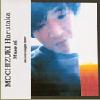 Despite some of the high energy alto sax improvisation here, this release by Japanese multi-instrumentalist Mochizuki Harutaka feels like the work of a sensitive soul. The gentle cover shot of Harutaka, with what looks suspiciously like a Tequila sunrise in the foreground, and some touching liner notes by post-folker Dredd Foole give the physical product an intimate, homespun feel.
Despite some of the high energy alto sax improvisation here, this release by Japanese multi-instrumentalist Mochizuki Harutaka feels like the work of a sensitive soul. The gentle cover shot of Harutaka, with what looks suspiciously like a Tequila sunrise in the foreground, and some touching liner notes by post-folker Dredd Foole give the physical product an intimate, homespun feel.
The plaintive bare-bones jazz melancholy of the opening piano/voice piece "Song" reveals Harutaka's unexpectedly sensitive vocal, his voice recorded as if heard through electric cotton wool. This almost traditional use of western balladry is unexpectedly repeated on the closing piece (also titled "Song"); to say these pieces are gorgeously fragile would be to utterly undersell their bookending effect. There's a pretty strong loner vibe coming off this record, the voice of someone refusing conventions and effortlessly matching their musical vision with something magical. Muse Ni sees Harutaka appear like a positive flipside to the dark desolation of a player like Jandek, carrying hope instead of despondency. These songs may be the album's double hearted core, despite their positions, but it's the three alto sax pieces that show the experimental reach of Harutaka.
"Alto Sax Two" may lack the muscle of other rowdier sax damaging players, but he seems more concerned with mapping out the instruments edges rather than following any internal routes. Running on wide-eyed virgin energy he combs his way through a version of everything-Nmperign-never-thought-of in a single three-and-a-half-minute burst. The short sharp backwards blasts of "Alto Sax Three" sound like they're sucked from the marrow of music rather than blown through reeds and metal. It's the final part of sax work which seems the most conventional in terms of free jazz playing: a swooping collection of notes shorn loose of the instrument. It's like hearing one side of a conversation, Harutaka responding with melody and fire to a quartet that doesn't exist outside of his head. This is a record that makes you dream about his next release.
samples:
Read More
- Gary Suarez
- Albums and Singles
Initially, I was excited to receive this release from Ras Myrhdak, whose lyrically intriguing "Blazer" had been a clever hit in Jamaica last year. A protege of Capleton with a decade of singles and ties to such noteworthy figures as Cutty Ranks and Bobby Digital, Myrhdak seemed long overdue to drop an album's worth of material. Unfortunately, producer Brotherman, eschewing the few genre missteps of Turbulence's Do Good, plays it considerably safe, a frustrating flaw which plagued that singjay's lackluster record. Rootsy one drop reggae suits the Jah praising vocalist, who flexes his malleable vocal range regularly within a single track, but the tracks have a frustrating tendency to blur into one another.
One of the few mention-worthy cuts, "Mankind," takes a page straight out of Damien Marley's playbook, vocally resembling the internationally known star's flow as well as his socially conscious lyrics. The riddim hits harder than the bulk of the album, and Myrhdak would do well to continue to explore that rougher side of the sound on future recordings. On the other side of the spectrum, "Jahneasha," comes closest to what could be a hit, though Myrhdak's romantic yet occasionally nasal delivery is a slightly overdone. Still, the singer's minor limitations don't fully account for why the end result just doesn't make for much than a passable reggae album, which the market has more than enough of.
Although this is only the second Minor 7 Flat 5 album I've heard, I cannot help but think that the problem with this and the aforementioned Turbulence release is the common thread that ties them. In proper reggae tradition, the label essentially serves as a showcase for Brotherman's productions, and in the same way that Lloyd "Bullwackie" Barnes or King Jammy define their imprints, quality control rests with the figurehead. Myrhdak has promise, as his hook-heavy choruses belie, but thanks to Brotherman, nothing here can match or surpass "Blazer."
Read More

